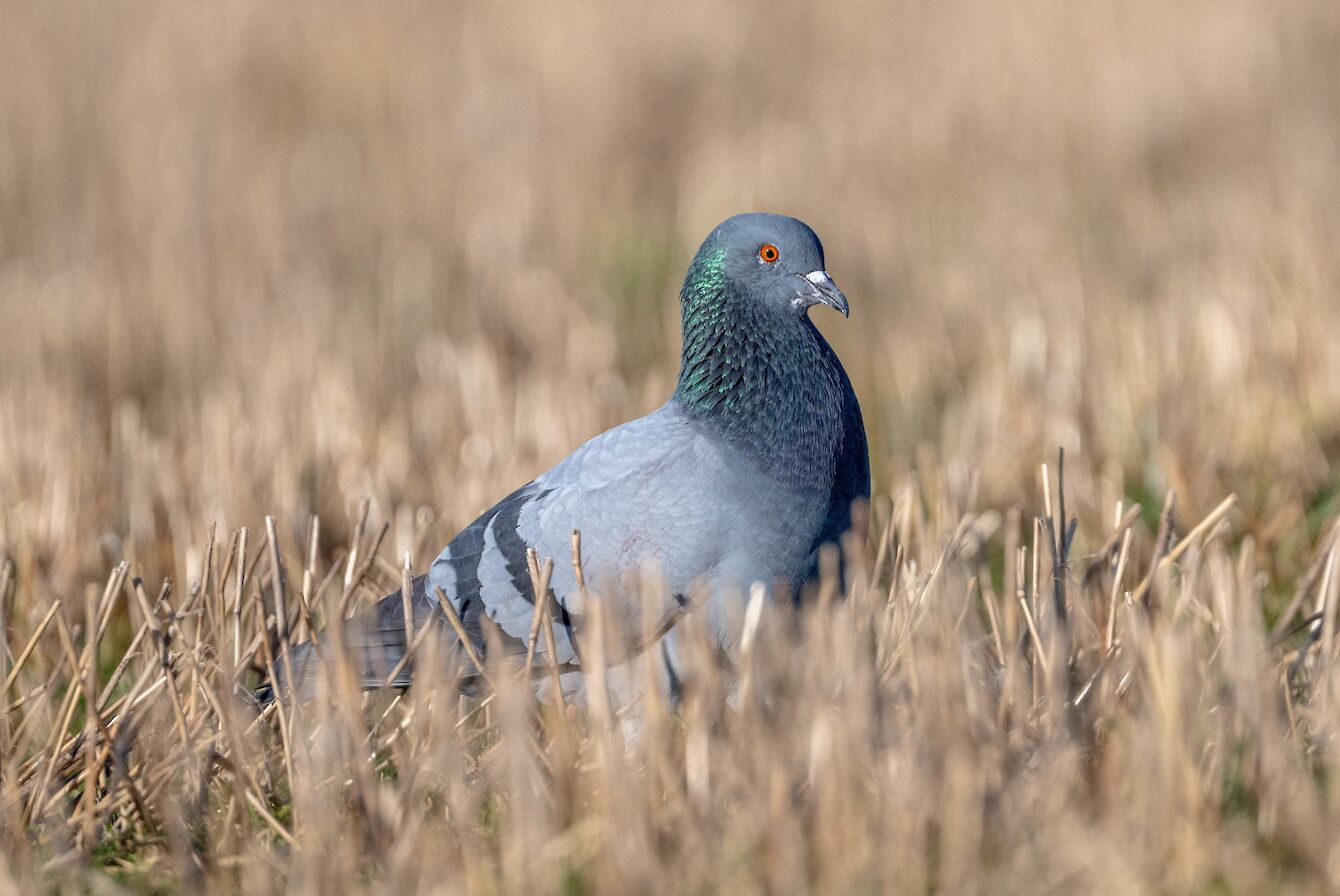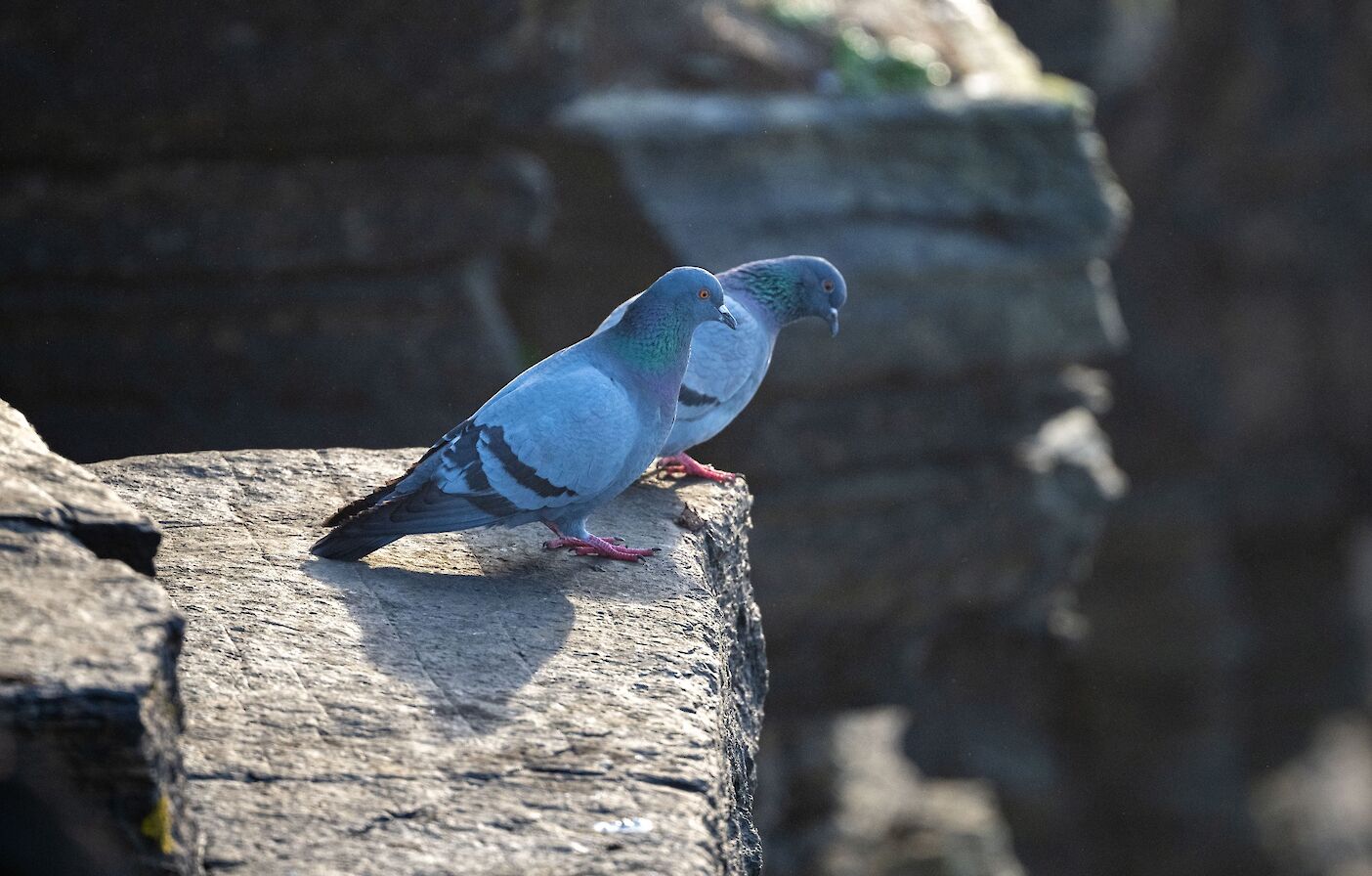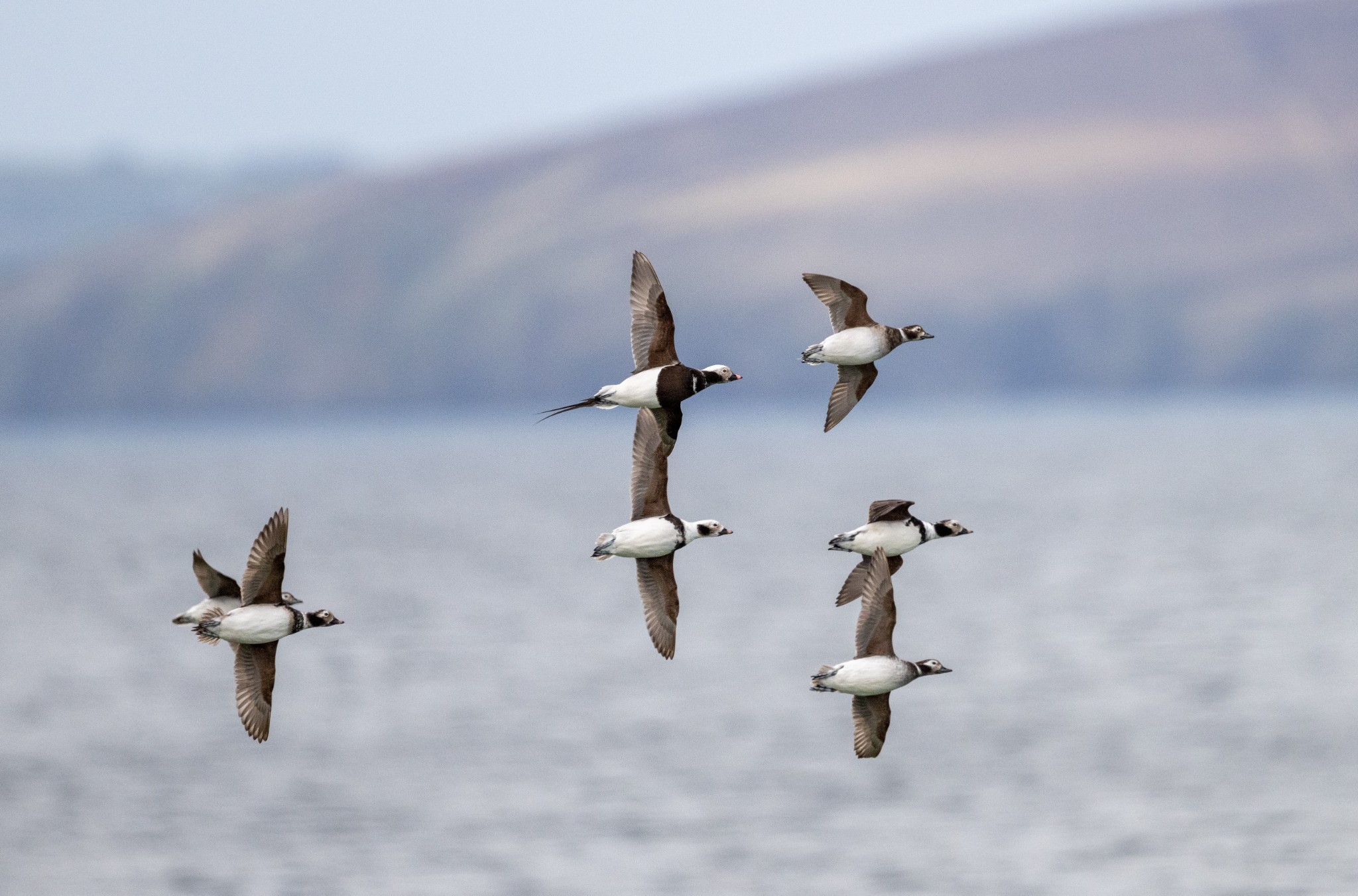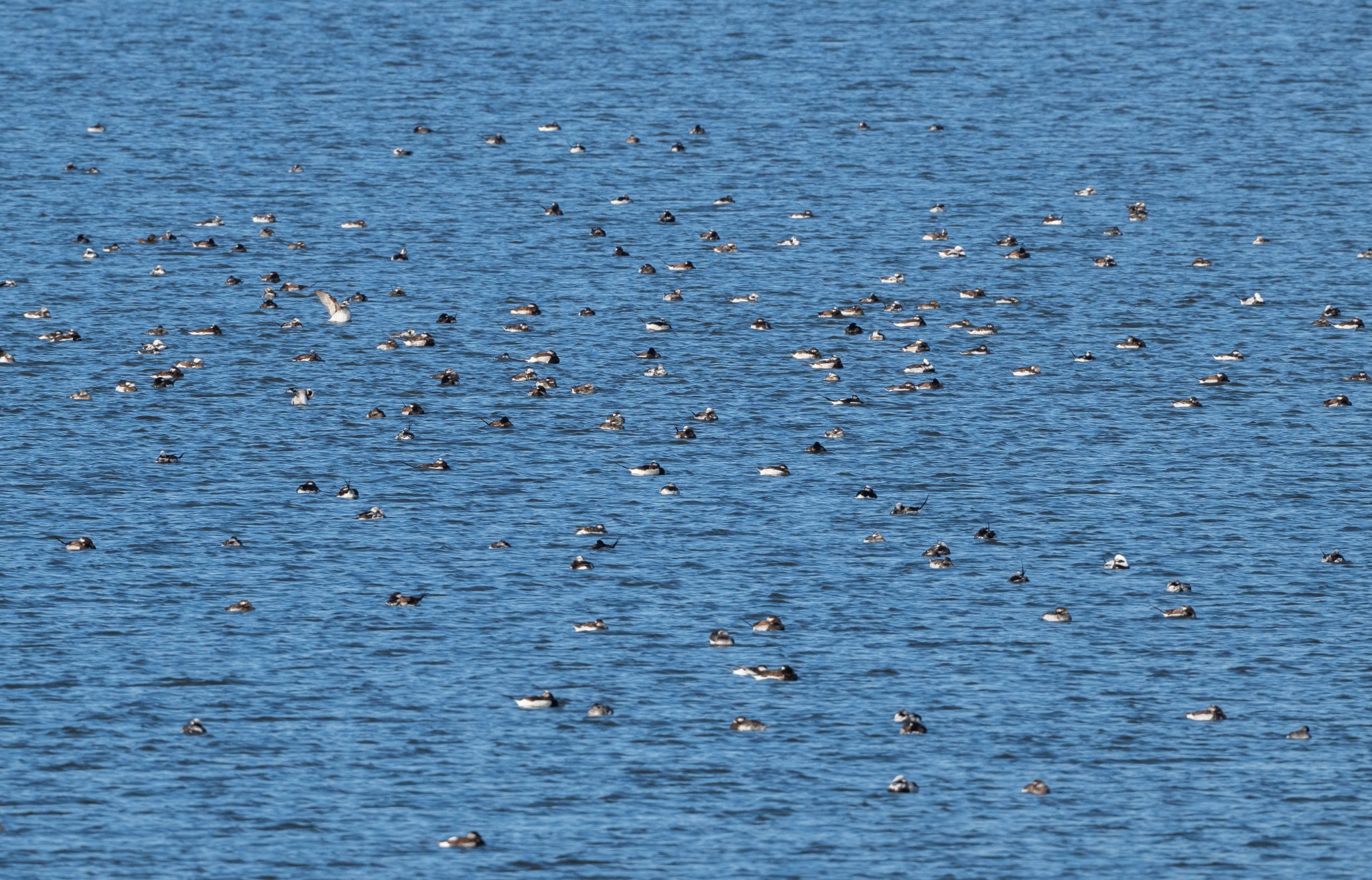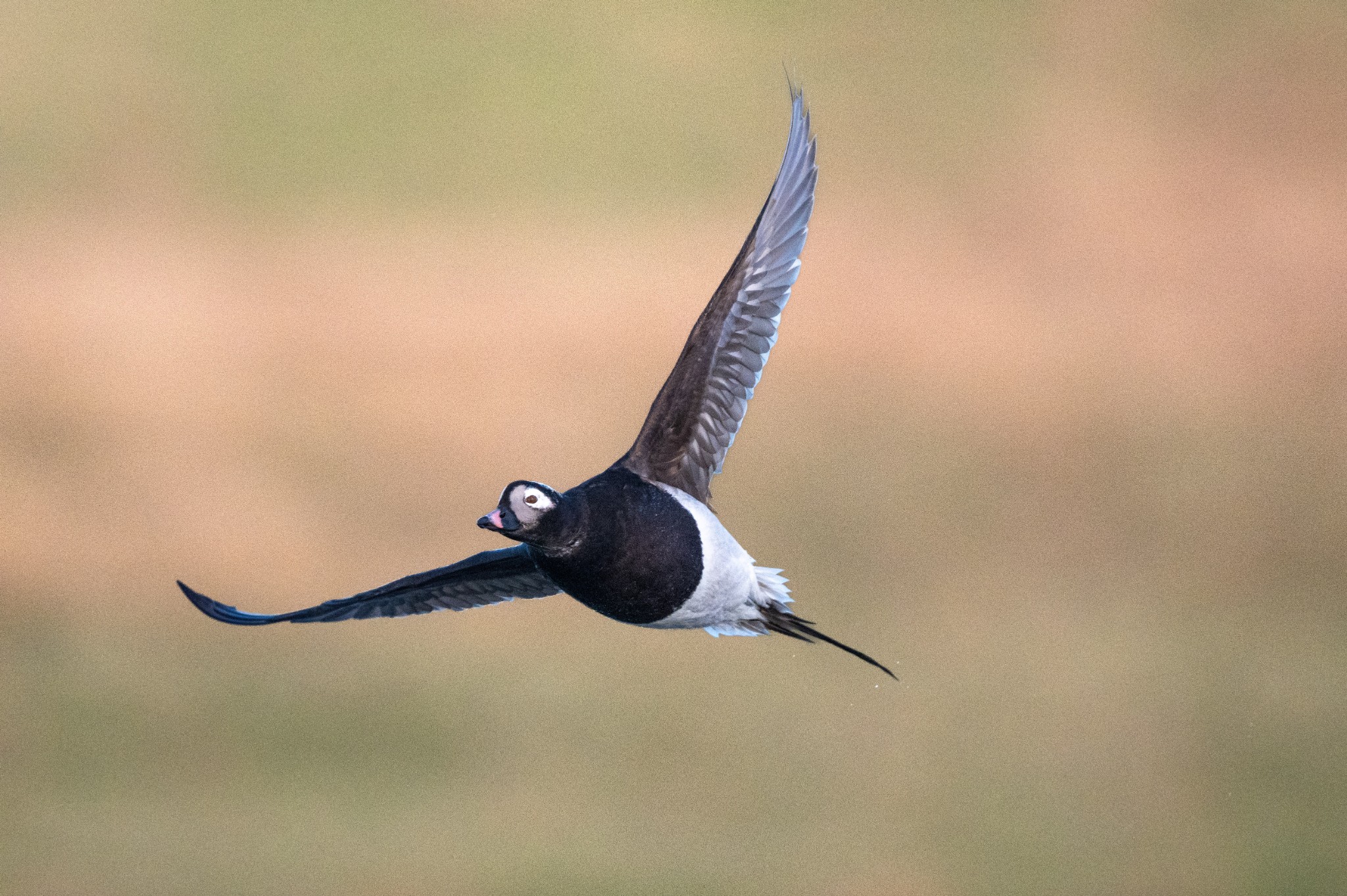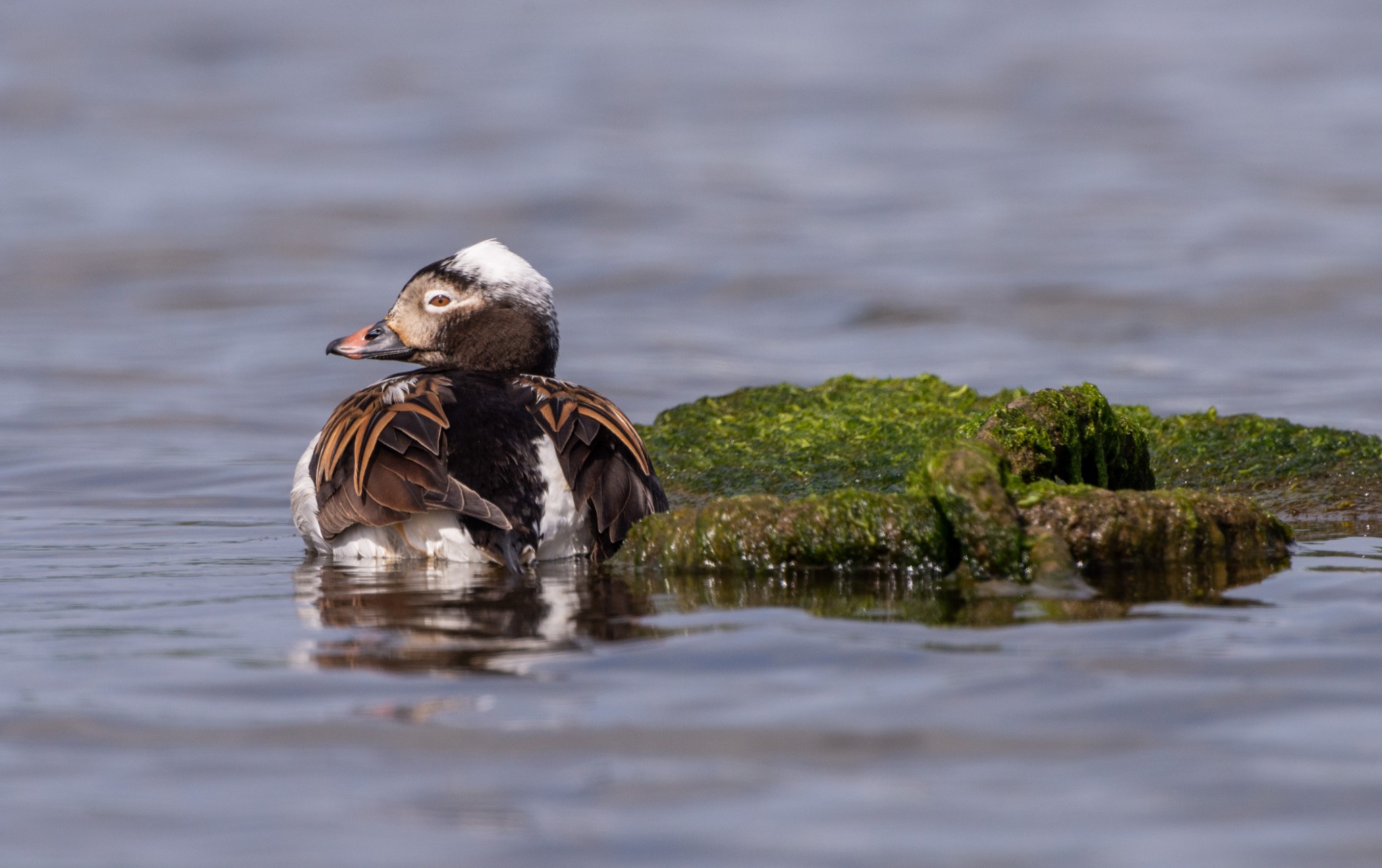Rooks last month and pigeons this month, what is going on I hear you ask?! The rock dove is probably one of those birds we give little thought to and yet there is much more than meets the eye to this underrated bird.
Unfortunately, this isn’t an entirely positive story, but we can still enjoy the bird as we encounter it feeding in stubble fields and, at this time of year, more commonly on our towering cliffs, flying in and out of the sea caves they have built their nests in.
On the face of it, or more accurately its plumage, our Orkney birds appear to be ‘pure’ rock doves - uniform grey with two attractive black wing bars, a white rump and lower back. However, the DNA of the birds presents a somewhat more complicated picture.
Feral rock doves, more commonly known as feral pigeons, are the problem. Yet these feral pigeons are themselves descended from rock doves. The worldwide decline of the rock dove has been hard to chart precisely because of extensive interbreeding with, and in most areas their replacement by, feral pigeons.
Rock doves are prolific breeders with up to five broods a year, but just how ‘wild’ are our Orcadian rock doves? The answer is probably best summed up as ‘not very’. That’s not a very scientific description I know, but it appears the genes of Orkney’s rock doves have been heavily influenced by those of feral pigeons. So much so in fact that their distinct evolutionary lineage is likely doomed to extinction.
Interestingly, the rock doves of the Outer Hebrides remain almost entirely free from the influence of the feral pigeon. This could be because historically dovecots were common throughout Orkney and an important source of food, so through the centuries there have been plenty of opportunities for the mixing of wild and feral birds.
But don’t our rock doves just look like wild rock doves? Well, yes, they do. But it isn’t quite as straightforward as you think. I recently had the chance to photograph a flock of rock doves feeding in a field with some fantastic close-up views, their necks shining an iridescent green and purple and with those lovely black wing bars appearing prominent.
The problem is that although rock doves exhibit only the classic wild-type ‘blue-bar’ plumage, feral domestic pigeons can exhibit identical plumage.
A clearer example amongst the flock I photographed that these are not birds of entirely wild lineage is that some have checkered backs. They’re still attractive but they have darker feathers appearing from the base of the neck and down the back.
Most of this flock does still display characteristics associated with wilder birds, such as the rounder forehead and a smaller ‘cere’, the white area at the top of the bill, and indeed they have a slimmer bill compared to those of the domestic pigeon. Their behaviour too is essentially that of wild birds. Rock doves aren’t always particularly approachable and can appear shy at times.
I have seen them most recently whilst watching the gathering numbers of seabirds now back on our sea cliffs. Despite persistently cold north and easterly winds, spring is most definitely here (well, spring Orkney-style anyway). This last week has seen numerous sightings of sea eagles roaming the isles, Westray included. These are younger birds no doubt scoping out potential new territories and something which also happened at this time last year. A new pattern perhaps - I hope so. Cetacean sightings are on the increase too, albeit slowly, with the distinctly stubby-shaped fin of humpback whales being seen breaking the surface on several occasions. I’ve seen my first wheatears of the year and the first of our two Scottish primrose flowerings is now well underway.
One of the spring highlights I look forward to each year is the gathering of the calloo, or long-tailed ducks, on some freshwater lochs located next to the sea, such as Echnaloch in Burray. In winter time the males in particular sport a striking white plumage with a dark, chocolate-brown cheek, lower breast and tail, but at this time of year it’s moulting into its summer garb. The dark brown becomes more prominent, eventually covering the whole chest and head besides an area of white and buff around its face. Topping the whole thing off is a dandy pink area on its bill.
Numbers steadily increase through early April with most birds departing by mid-May. Over the last few years however, when I’ve filmed them for BBC Springwatch and my own projects, I’ve noticed peak numbers to be around mid-April with over a thousand birds in some locations. As you can imagine this is quite a sight, but for whatever reason the number of birds using these lochs isn’t necessarily uniform in number each year. Echnaloch for example saw 250 birds use the loch in 2003, up to 1000 in 2017, and this year I observed just over 400 birds.
One question is why these ducks, which really are true ‘sea ducks’ during the winter, use these freshwater lochs at all given most of the activity on them seems to be simply resting, something they could surely do on the sea? Other activities include drinking, preening and I’ve observed some courtship behaviour, but the best examples of this have been watching them whilst at sea out in Scapa Flow.
Whatever the reason, I absolutely love watching them stream in low over the sea before rising quite sharply over the slope of the Echnaloch shore, wings whirring and calling all the while with their sublime yodeling call before ‘skooshing’ down onto the loch.
I have a new camera and lens, a Nikon Z8 and a Nikon 800mm lens, a set-up that required trading in a lot of my old gear. I’m still getting used to it and I thought what better way to test out the new auto-focus capabilities than to photograph the long-tailed ducks in flight as they approach the loch.
This proved to be something of a challenge but one that the Z8 mostly met. Like most systems however it wasn’t foolproof, but I think this has more to do with making the most of the system rather than the system itself.
The main issue for me was the speed of the ducks themselves, but also once your AF has locked on the birds, they don’t necessarily stay in the formation you had initially composed, if at all. Getting a clean image where the birds wings weren’t overlapping was difficult. To suggest that I’m composing as I’m panning with the birds is slightly inaccurate however, I’m simply panning and firing away, trying to keep the birds in the frame and hoping that the AF system has locked onto one of them at the same time!
On the Z8 I use the AF-C mode with the 3D function and bird recognition. The trick for success is to have the focusing point already relatively close to where the birds are to give the AF system a fighting chance. If, for instance, you are focused on the hills on the other side of Scapa Flow and yet can see a flock of long-tailed ducks coming your way from 200 metres out, the AF system will struggle to pick them up let alone follow them. A trick I use is to focus somewhere on the sea close to where the birds are flying over then get the birds in frame, if the 3D tracking is working you will see it in the viewfinder - i.e. the focus point will follow on the bird somewhere. Don’t be tempted to keep depressing the shutter button (or back button) in order to ‘help’ the camera track the birds, it’s already doing the hard work for you.
The other problem I had was the wildly differing exposures I encountered whilst panning with the birds. On the loch itself the water and background were quite dark, but as they took off from the water, they crossed a hillside in sunlight and then headed out over the sea itself where the reflected sun on the water was almost blindingly bright. I work on aperture priority a lot and the setting simply couldn’t cope with the difference in exposures.
As soon as the birds took off, I could see the shutter speed the camera wanted to choose because of the dark background was too slow, not only resulting in overexposure of the birds but a shutter speed too slow to render the birds sharp. Once over the bright sea the camera couldn’t choose a shutter speed high enough to cope with the already high aperture. The solution? Change to shutter priority, around 1/2000th of a second, and set a minimum and maximum ISO so that they camera has leeway to cope with all the different scenes the ducks would fly through. You could also simply use Auto-ISO but setting it yourself means you don’t stray into an ISO you find too grainy.
After all the technical stuff it’s important too to remember to enjoy the spectacle. Once you’ve had your fill, put the camera down, enjoy the yodeling and imagine what the ducks have in prospect this year. A flight to the Arctic to bring up their young before heading back south to Orkney to spend the winter here. But before we see them again, let’s enjoy the wonders of the natural world the spring and summer have to offer first.
Raymond is a wildlife filmmaker who also offers bespoke Orkney wildlife tours and one-to-one wildlife photography tuition. Find out more via his official website. You can also find him on Facebook, Twitter and Instagram.
